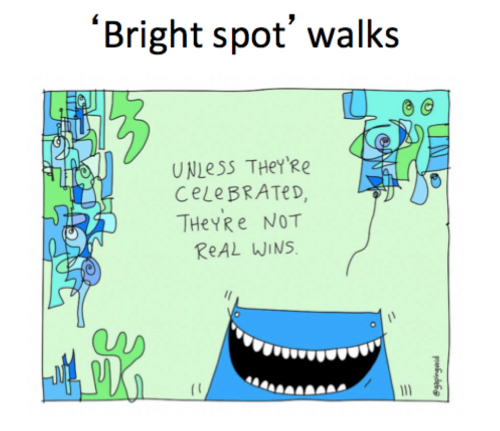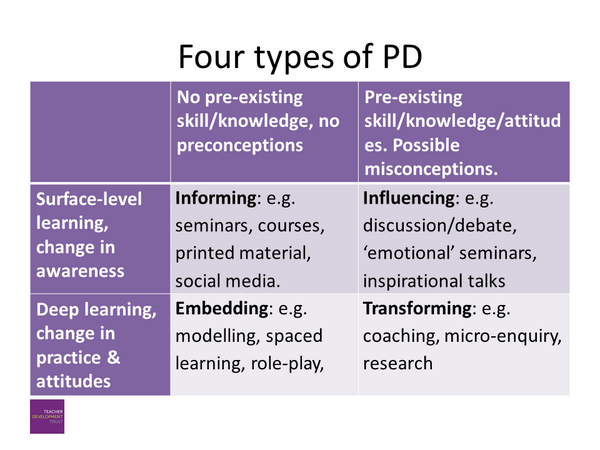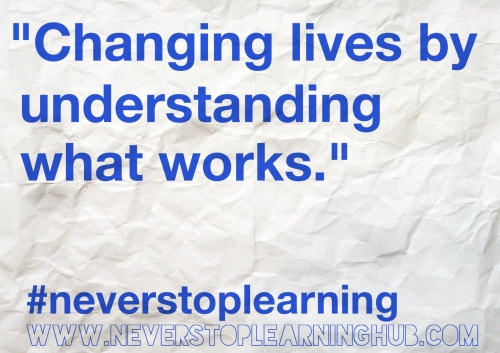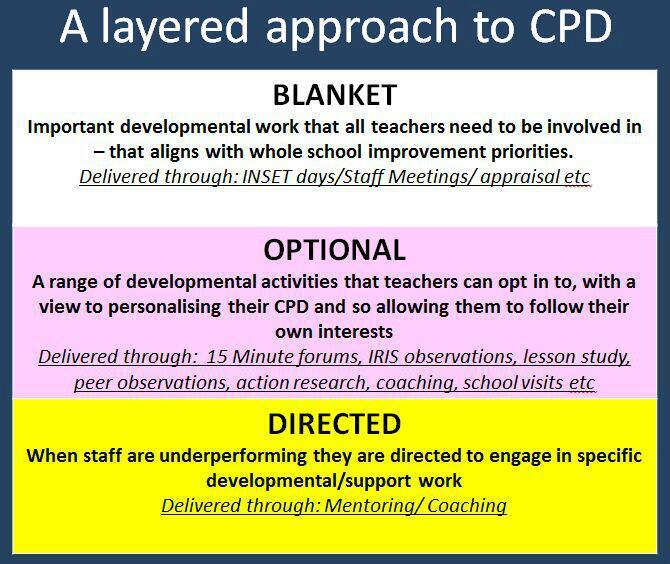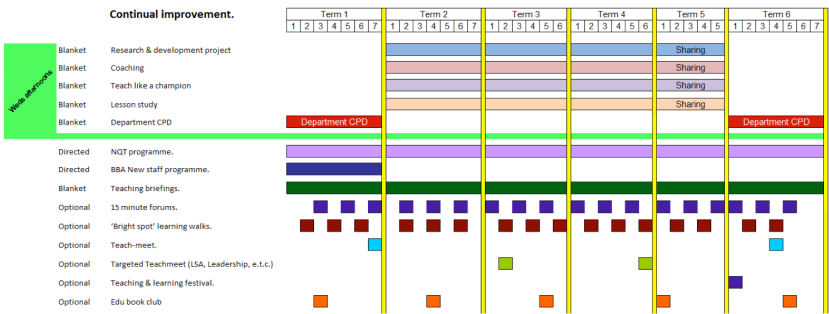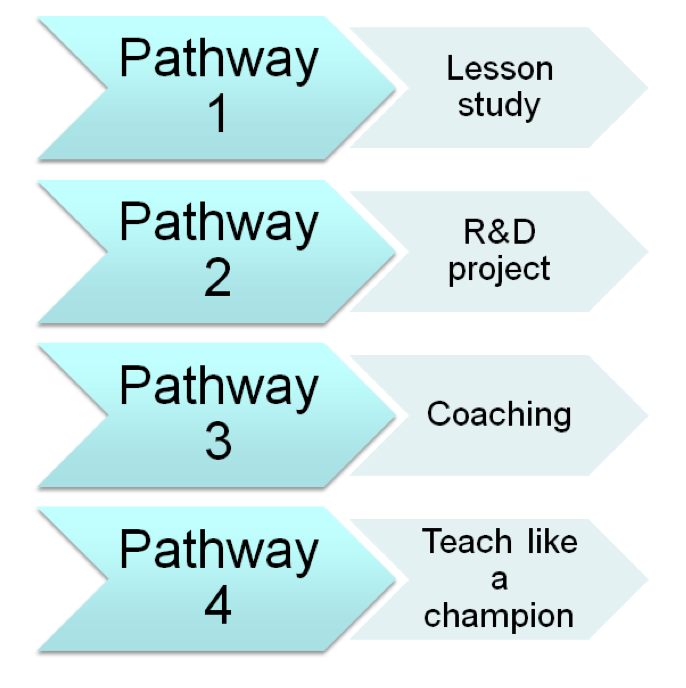Category: pedagogy
Rinsing the cottage cheese – part two: The dual operating system
In my last post on leading whole school CPD for teaching staff I described my plan for the year and my thinking behind it. Now that the first term is over it seems like a good time to reflect on how the schools vision for genuinely continual, personalised CPD is taking shape.
At my school CPD sessions are scheduled every other Wednesday afternoon throughout the whole year. During term 1 these sessions were given over to departments. This has been really popular with staff and has enabled departments to recap and embed expectations whilst sharing great practice. In preparation for this department heads were asked to submit a plan for the sessions (brief summary of what would be covered in each session). This was really useful for me as I was able to see at a glance what departments were working on and also start to connect the dots across the school – linking up departments that were focusing on similar things.
Outside of the Wednesday afternoon sessions being run in departments I now had term 1 to set up and embed optional CPD activities for staff, something that had not happened before in school. Before I outline some of the optional activities, first let me explain my thinking behind this approach.
In John Kotter’s book ‘Accelerate’ he puts forward an idea of how great organisations stay creative and innovative as they grow in size. When most start up companies begin they don’t tend to have a hierarchical structure, instead they work in small groups that collaborate and innovate with flow. This is in essence one of the driving forces behind successful start up companies – their ability to work in a way that is free from hierarchical structures which encourages and enables innovation and creativity. Ironically as these companies grow into large organisations they tend to develop a more structured hierarchy and lose the spark of creativity they once had when they were a small start up. Kotter argues that the truly great organisations run what he calls a dual-operating system – they have a structural hierarchy to ensure organisational accountability but they also deliberately create opportunities for groups of people to get together and collaborate outside of this structure.
This is what I wanted to create with optional CPD activities – opportunities for people (regardless of job role) to get together and collaborate on things they are interested in. Making these groups optional means you get the right people on the bus at the beginning which increases the chances of success. Success is teachers talking about teaching. Success is collaborating in meaningful ways which empowers people to take action and improve because they feel passionately about doing so.
With Kotter’s dual operating system in mind I went about setting up a few optional CPD activities over the course of the first term…
15 minute forums.
Over the course of the first term we have held three 15 minute forums on Friday lunch times. Each session is lead by a member of teaching staff and attendance is completely optional. These sessions serve as a great opportunity for colleagues to share ideas and discuss them in more detail. The worry is always ‘will anyone turn up?!’ Thankfully numbers have been good with sessions ranging from 15-20 colleagues in attendance. Sessions this term have included:
- Positive relationships with staff and students.
- Effective mind-mapping techniques for revision.
- Learning dialogue.
What has been really pleasing is that the sessions are not necessarily about someone giving you a ‘silver bullet’ on how to do something. The theme that has evolved is that staff bring something they are working on, explain their thinking and any impact it has before others from the group share their experiences or thoughts on how a strategy could be improved or implemented more widely.
Edu-book club.
Another relatively easy activity to set up. I choose the book ‘The hidden lives of learners’ by Graham Nuthall to start of with (after the first cycle I will be asking staff to submit book options and then vote on a range of books). I sent an email out to all staff advertising the activity and set a limit of 10 places. Within a couple of days the places were filled, books were given out and the ball was rolling. Towards the end of term 2 we will meet to discuss the book and present back to the staff body during a morning teacher briefing on what we found out.
‘Bright spot’ learning walks.
No grades no forms. The purpose of these learning walks is to find great practice, those bright spots that exist somewhere in every school. I conducted one in our Science department recently where I managed to take pictures of several great resources and bits of student work. These then go into a presentation which can be used for a teacher briefing. During the teacher briefing you display the images and ask colleagues to explain more about the context of what was going on in the lesson and how the resource / strategy helped. Longer term I would like to create more of an ‘open door’ culture across the school and involve staff in searching out the bright spots for themselves.
TeachMeet.
I’m not sure if it was over-ambitious and just stupid to organise a TeachMeet for the penultimate evening of an 8 week term, but I did and it offered another opportunity for staff to get involved. Just over 100 heroic teachers from different schools (across multiple phases) showed up for an evening of having their thinking challenged whilst also being inspired and thanked for their hard work. The theme of the evening was about understanding what works rather than just being bombarded with 1000s of ‘quick wins.’ TeachMeets are a great opportunity for expanding your thinking, developing ideas and networking with great people outside of your immediate day to day surroundings. Last weeks event was brilliantly captured by David Vignolli (a visual artist from London).
Now that these activities have been set up it’s my role to ensure they continue (for as long as they are useful to people). My hope is that these additional activities provide staff with opportunities to engage and develop in ways which suit them. The one size fits all approach to CPD is dead. To make great teaching a typicality across a school, staff must be given meaningful opportunities to develop and feel supported in doing so. Investing effectively in staff will ultimately lead to better experiences for the students which is what all of this is about after all – the students.
Rinsing the cottage cheese – making CPD meaningful.
Dave Scott is a 6 times winning world Ironman triathlete who left nothing to chance. During peak training you could catch him cycling 75 miles, swimming a few 1000 metres and running up to 20 miles on a daily basis for weeks on end. In order to win six world championships he continued to reflect on his training and make tweaks to it in order to achieve optimal performance (much like the British cycling team under Sir David Brailsford – searching for a series of small marginal gains which would combine to produce a larger impact on performance). Dave Scott took it a step further and use to rinse his cottage cheese (not a euphemism) with water in order to reduce the amount of fat it contained upon consumption. He believed that this was one in series of other small steps which enabled him to reach peak performance. This got me thinking about teaching and how teachers develop their practice in the classroom.
As teachers we are in the business of changing lives. The best to do this is to get a better understanding of what works in the classroom (rinse our classrooms of wasteful practices and focus on what actually works). CPD is often fraught with difficulties – whole bodies of staff being forced to engage with CPD in one particular way which leads to minimal buy in. One off INSET days on a magical strategy to transform your teaching and the cult of outstanding can also end up leading to more lip service but even less action in the classroom. As David Weston (@informed_edu) points out we need to move our teacher development from awareness to transformative practice if we want teaching to improve. We need to take action.
From September I took up a leadership role in my school to lead CPD for teaching staff. I’m passionate about helping all students to succeed and understand that the best way for that to happen is to ensure they are exposed to great teaching. I want teachers to flourish and engage with CPD that personalised and enables them to take control, take action and subscribe to continual improvement in a way that works for them. In previous years CPD has consisted of a ‘one size fits all approach’ and so this year I wanted to do something a little different.
Based on the ideas of @Shaun_Allison and @Dan_Brinton I set out to offer a much more personalised CPD programme that focused on transformative activities. In the rest of this post I’ll attempt to outline the CPD programme I have planned for the year.
CPD overview.
I adopted @Shaun_Allison ‘s layered approach to CPD.
Blanket activities relates to whole staff CPD activities in directed time which in my school equates to one 60 minute session every fortnight throughout the whole year.
Optional activities means exactly that – CPD activities like 15 minute forums, teach-meets, Edu-book club that teachers opt into if they want to. These activities are about getting the ‘right people on the bus.’ In order for them to be successful you need to create clusters of staff that want to be involved (and quite often lots do but just haven’t had an appropriate forum to get involved).
Directed activities relate to sessions for specific groups of staff like NQTs who may need additional support but also under-performing staff. Providing support for these groups are vital to ensuring that students get the best possible learning experiences.
CPD Overview 2014 – 2015.
Here’s my plan – Download a PDF copy here.
Staff will spend blanket time in departments during terms 1 and 6. Department leaders put forward a plan as to what their CPD will look like in these sessions. It focuses on specific needs of each department.
Terms 2 – 5 is where the personalised CPD takes place. Staff will opt into one of four pathways. The staff leading each pathway have opted to lead and take part in their pathway so will not miss out on CPD. During term 5 staff will be given directed time to create a piece of work to explain what they have investigated and then present it in a market-place style event at the end of term 5. I’ll blog about each pathway in more detail later in the year.
Outside of the blanket sessions there are a number of optional CPD activities aimed at building a culture of continual improvement. So far take up has been overwhelmingly strong for the optional activities.
Teaching is difficult but rewarding. We fail at it a lot which provides us with opportunities to learn more about what works and what doesn’t. Engaging with research is an accelerator that can challenge the way we think about teaching and in turn move our practice forward. So lets strip away the novelty gestures, rinse our cottage cheese and get better at understanding what works.
Further reading:
The Perfect CPD guide by Shaun Allison
Teach like a champion by Doug Lemov.
#TMCOOP presentation – Raising attainment at KS4.
On Thursday 22nd May I presented some ideas at #TMCOOP about how to raise attainment at KS4. Below is a summary of my presentation.
Raising attainment at KS4.
I’ve noticed in my relatively short time of being a teacher that one of the overwhelmingly strongest indicators of how well a student achieves is effort. This may sound obvious. It is. Angela Duckworth discovered this in her research on GRIT (persistant effort towards a long term goal). If we want to do well at something that’s difficult it will require a huge amount of effort. How often do students not realise this until it is too late… “I wish I’d put more effort into revising.” When I look back over the past few years and analyse why some students have performed well at KS4 and some didn’t, the main differentiator is effort.
During last two terms I have attempted to build an ‘ethic of excellence’ in my classroom. I want all students to aspire to achieve the very top grades and I want them to know it will take a huge amount effort. I also want them to know that I will match their effort by supporting them through rigorous marking and feedback. Students aren’t always the best at following instructions from adults but they can be extremely good at mimicking behaviours.
An ethic of excellence.
Having read Ron Berger’s remarkable book ‘An Ethic of Excellence’ I was motivated to get my students working their socks off. In the book Berger talks about how he spends a lot of time ensuring that the work he asks his students to do is as close to a ‘real life’ as possible. He also discusses how he built a culture in his classroom whereby students only received one of two grades for their work – ‘Excellent’ or ‘Not finished yet.’ What a powerful system. I decided to give it a try with a GCSE class that were about to start a 10 week coursework project. Target grades ranged from A to E.
High expectations.
Do target grades have an adverse effect on effort? If a student is targeted a D/E grade, is it possible that they might see that as an opportunity to adjust their effort to reflect the low target, i.e. not try very hard. To test this hypothesis I started by setting a default expectation of all students in the class: A*. Was I confident that all students would achieve this? Realistically, probably not as there are many factors out of my control (attendance being one of them). But I was confident that this strategy would help everyone achieve or exceed their target grade (something that I hadn’t managed to do in the past).
Talent isn’t born.
I spent sometime explaining to students about the David Beckham’s and Jonny Wilkinson’s of this world and how much effort they put into practising. At the beginning of most lessons we would watch a short clip that actively demonstrated how high levels of effort matched with deliberate practice can lead to very impressive results. I found the work of Daniel Coyle (and his book ‘The Talent Code’) particularly helpful in shaping my thinking around this. In his book, Coyle explains how he spent almost two years scouring the world researching groups of talented people – from teenage Brazilian football players to young musical prodigies. A recurring theme was shared amongst all these successful groups. Lots of effort coupled with deliberate practice that was guided by a master coach.
Students were beginning to understand that the more effort they put in, the more they asked for my advice, the more they thought about their work the better the chance they had at achieving an A*.
Re-drafting
This is where the effort manifested itself in the classroom. I introduced Berger’s idea of grading work as either ‘Excellent’ or ‘Not finished yet.’ Berger describes the art of re-drafting brilliantly in the video ‘Austin’s butterfly’ which is about a young boy who is asked to draw a butterfly by copying a photograph. You can see the difference in quality from the first attempt to the final attempt.
I attempted to build a culture in the classroom where it was typicality that all students would re-draft their work. Students were asked to re-draft their work several times which often led to a small incremental increase in marks between drafts but a huge difference by the time the final draft was submitted. Students also learnt to take a bit more pride in their work which appeared to come about because they had put so much effort into the redrafting that when it came time to submit a final copy they wanted it to be as close to perfect as possible.
Feedback – no grades.
The re-drafting was helped along by precise feedback in which I gave no grades. Instead I opted to simply tell students how many marks they were away from an A*. I then broke the mark scheme down into very small specific chunks which when added up would give full marks. This helped me move away from phrases like “Explain more” and enabled me to give really precise feedback to students. If a student was 15 marks from an A* they were able to tangibly see where they could add those marks to their work. With a potential A* on the line they were happy to continue to re-draft.
Impact.
I’d like to say a class full of A* grades but that was not the case. However all students did either achieve or exceed their target grade with no student scoring below a C and four students securing an A*. It wasn’t just the grades that pleased me but also the students attitudes towards their work. In class they were more focused and keen to give me work to mark. The students were proud of what they had achieved and I was extremely proud of them.
What I have described in this post is by no means an exact science and I’m certainly not telling you to change what you’re doing, but this worked for these students.
And remember… “Don’t be upset with the results you didn’t get from the work you didn’t do.” I think this applies to us all.
#neverstoplearning
Teaching that STICKS – Planning a ‘sticky’ lesson.
How do we make learning stick?
Chip & Dan Heath’s most recent book ‘Made to stick’ provides a framework for making ideas ‘sticky.’ If you’ve not read the book I’d advise getting a copy. Whilst you’re waiting for your copy to arrive, I’d recommend watching the following two videos to get an overview of the Heath brothers ideas.
The Heath brothers brilliantly summarise a ‘sticky’ idea here…
A sticky idea is an idea that’s understood, that’s remembered, and that changes something (opinions, behaviors, values). As a teacher, you’re on the front lines of stickiness. Every single day, you’ve got to wake up in the morning and go make ideas stick. And let’s face it, this is no easy mission. Few students burst into the classroom, giddy with anticipation, ready for the latest lesson on punctuation, polynomials or pilgrims.
Here’s the good new about stickiness: This isn’t just interesting trivia about how the world of ideas works. Rather, it’s a playbook. There are very practical ways that you can make your teaching stickier.
In the book the Heath brothers come up with a framework called SUCCESS which can be used to deliver knowledge in a more memorable way.
Shaun Allison’s post captures the essence of the SUCCESS framework in this graphic…
Planning a ‘sticky’ lesson.
All of this has made me reflect on how I approach planning a lesson and I now believe that I can not only use this framework to help hook students into content, but help them remember it at the same time (I’m not ruling out the importance of deep, deliberate practice here). This is especially important at the beginning of new units and topics where baseline knowledge of students may be little or non-existent. Inspired by the ‘5 minute lesson plan’ series I’ve created a ‘Sticky’ planning document that would work just as well for lessons as it would do for workshops (in fact I used it recently to plan a workshop on GRIT I delivered to colleagues on an INSET day – blog post to follow). Here it is…
How does it work?
Top right hand corner is probably a good place to start. What do you want students/colleagues to think about in the session? Why is this important? Consider this English lesson about Romeo & Juliet whereby students were creating puppets of characters to act out a scene (Ofsted – Moving English forward report – March 2012). What do you think students were thinking about during the English lesson – the characters of the play or how to make a good puppet? It’s important to design experiences that will enable the audience to think about the core knowledge or practice key skills (this is explored further in the book ‘Seven Myths about education’ by Daisy Christodoulou. Daisy specifically refers to this lesson in myth 6: ‘projects activities are the best way to learn’).
Once you have decided what you want your audience to think about during the session you can think about how you can make this stick by using the SUCCESS framework on the left hand side. This is Shaun Allison’s brilliant example from a year 11 Science lesson where he wanted to introduce the idea of nuclear radiation:
Simple – I anchored it on to their existing knowledge of the atom, by getting them to draw and explain the structure of the atom, which we then shared and discussed. This would then lead on to two key concepts for the lesson – be able to describe and explain Rutherford’s scattering experiment and what an isotope is. This is definitely not about dumbing down or lowering expectations. It’s about distilling complex ideas into the key ideas and then using what they already know to build up to these complex ideas. In his article on explanation (see below) David makes the point of how important it is to use specialist academic language here – and insist that students do too.
Unexpected – In order to get them curious, we looked at photos of Chernobyl and posed the question, how could these tiny atoms cause such devastation? This is the gap in their knowledge that we were going to fill, having opened it. They were curious!
Concrete – Rutherford’s scattering experiment is very conceptual, so I demonstrated it by throwing squash balls at footballs. They bounced off, in the same way that early scientists expected the alpha particles to do when they hit the ‘plum pudding’ atoms. This led on to a discussion about what it meant when the alpha particles went straight through?
Credible – The photos of Chernobyl helped with this, as it made the issue very real. This can also be backed up by statistics e.g. claims that Chernobyl won’t be fit for human habitation for 20 000 years. However, this will be returned to next lesson, when we get out the radioactive sources and the Geiger counter. Students will see that objects emit radiation.
Emotional – The photos of people who had been affected by Chernobyl (mutations) certainly made them feel for the people. The ‘emotional’ trait can also be developed by making students feel aspirational.
Story – Science provides loads of opportunities to tell stories – and the story of Rutherford’s scattering experiment was no exception. It also resulted in some great questions from the students about ‘How science works’ e.g. Why didn’t he just believe the plum pudding idea? What made him think of this experiment? Did he do any other experiments? Did people believe him? How do we know he’s right? Brilliant fodder for the science teacher!
The last section of the plan can be used to plan out the logistics of your session – timings, activities, resources, e.t.c.
Resource.
Sticky plan (editable) – print double sided on A3.
‘Teaching that sticks’ by Chip & Dan Heath.
Impact?
The SUCCESS framework has certainly made me think about how I deliver information, whether in a lesson, staff briefing or workshop. The power of a story certainly hooks people in and when pitched correctly using concrete, emotional examples I believe greater depth and retention (by the audience) is reached. Using the above plan to design a recent workshop (I’ll upload a copy of my plan if I can find the original paper copy!) made me really think through the content before hand and how it might be perceived. The SUCCESS framework made me think about how I would like to learn about the knowledge I was trying to deliver.
Next steps.
I’m going to be using it for future workshops that I deliver on INSET days and next term I intend to use it to plan a series of lessons. Why not give it a go yourself. Try planning a lesson or workshop using the ‘sticky’ plan. I’d really like your feedback on how it can be developed.
#neverstoplearning
Shifting gears
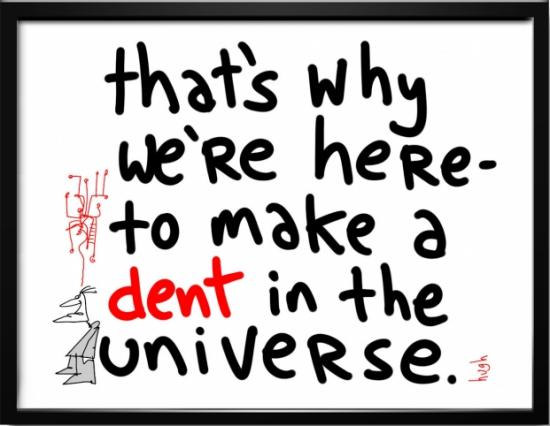
Image via @gapingvoid – http://gapingvoid.com/
Inspired by Zoe Elder’s post – ‘Why we continue to accept the challenge’ and Mark Anderson’s post ‘Be happy,’ here is a quick post with the start of a new term in mind.
2013 was a remarkable year. 2014 will be better. It’s time to shift gears.
Four tips to help you make this year even better:
1. Keep exploring.
2. Connect with others.
3. Share your discoveries.
4. Deepen your understanding.
Remember, you’re only human but you make an incredible difference.
#Nurture1314
2013 in no particular order…
1. Remarkable colleagues.
I work with some remarkable people. People who think good is not good enough and will go the extra mile for their students and fellow teachers. These people are remarkable in many ways and continue to inspire me to do and be better everyday. Check out a few of them on Twitter: @mr_bunker_edu, @mrtleahy, @artedu_kheath, @sporteredu, @mrgillenglish, @mrdaymentmaths, @gwilliams195, @jonericjones, @dominichoudhury, @bristolbrunel
2. Safe is risky.
To provide the best possible outcomes for the young people we teach we have to provide remarkable experiences for them. In order to do this you have to be prepared to take risks in the classroom. Great teaching is not a ladder to climb, rather a jungle gym to explore.
3. #neverstoplearning
I was successful in securing a leadership honorarium at my school in September to drive the improvement of teaching and learning. Since then I have set up a small team of pedagogy leaders and created the brand #neverstoplearning (http://neverstoplearninghub.com/) to share remarkable ideas around teaching, learning and leadership in schools. A teach meet is also in the pipeline for 2013!
4. Leadership is not a position, it is a choice.
This is my 5th year as a teacher (4 of them as a programme leader of Computing) and I’m beginning to understand what it means to be a leader. It’s not a title. It’s about leading by example, high expectations, good habits, strong moral purpose and growing other leaders.
5. Computing.
This is one of my passions and I love teaching it! It has involved me having to work hard to ‘re-fresh’ my skill set & subject knowledge, but that does not feel like work because one of my other passions is learning.
6. Teach Meets.
I’ve attended a few teach meets this year and I am convinced it’s the best CPD out there. Created for teachers by teachers. No hidden agendas. I always walk away feeling inspired, more motivated and with a long list of ideas to explore further.
7. Reading.
Simon Sinek. Seth Godin. Malcolm Gladwell. Chip & Dan Heath. Hugh Mcleod. Doug Lemov. John Hattie. Jamie Smart. Ken Segall. David Didau. Hywel Roberts. Zoe Elder.
8. Distributed leadership works.
I work in school full of leaders. The forward thinking SLT have dissolved more power to the people closet to the action. They have invested time and effort into growing more leaders and as a result there is much more purpose and collective accountability about what our school does. I’m excited to see where 2014 takes us.
9. Make more art.
A realisation I’ve had this year. If you view something as work you tend to find ways to do less of it. If you view something as art you tend to find ways to do more of it.
10. Ultra running.
Running is part of my life. It helps me to achieve clarity and feel good. Ultra running tests me physically and mentally. This year I completed my longest ever continuous run – 54 miles in one go, as well as a few other shorter ultra marathons, marathons, half marathons and 10k’s.
11. Students.
They’re incredible.
12. Twitter.
It’s the ultimate staff room. Lots of interesting debate, ideas and an overwhelming willingness to share. Teaching is an emotional, people orientated art form and without the support, kindness and gift giving of fellow professionals I don’t think the profession would grow. So I thank you Twitter for connecting me with many marvellous artists!
13. Next steps.
I recently attended my first interview for the role of Assistant Principal. Didn’t get the job but learnt an awful lot! Why Assistant Principal? I want to influence more students than just the ones I teach. I like to be challenged. I like to connect, collaborate and work with other people. I like to learn from other people and help them to do their best possible work. I have a passion for teaching and learning that I want to share. I’m devoted to meaningful work.
2014 in no particular order…
1. Keep exploring pedagogy.
2. Take more (measured) risks in the classroom.
3. Blog / reflect more often.
4. Listen more.
5. Read more – looking forward to Simon Sinek’s ‘Leaders eat last.’
6. Deliver a teach meet in Bristol (keep diaries clear for 20th March 2014).
7. Encourage more people to share remarkable ideas through http://neverstoplearninghub.com/
8. Run 100km in one go and complete 5 ultra marathons.
9. Keep expectations high.
10. Continue to work through Doug Lemov’s ‘Teach like a champion’ book, trying out different techniques in the classroom (if you don’t have this book get it!).
11. Organise and run CPD sessions with pedagogy leaders.
12. Exercise everyday.
13. Eat less chocolate biscuits.
14. Never stop learning.
Safe is risky.
Safe is risky. Very good is bad. We must be remarkable. Our students deserve nothing less.
Whatever your line of work it’s not enough to just follow instructions and be a cog in a bigger machine. As Godin points out in ‘The Icarus Deception’ and ‘Linchpin’, the industrial complex is dying and we are now living in a connected economy where it pays to give.
Let me explain a bit further.
Safe is risky. Playing safe will not enable you to grow. It’s only by taking measured risks that we learn and grow.
Very good is bad. This is a phrase we use when people do what we expect of them. The industrial age taught us that the reward for producing lots of ‘work’ is being given more work to do. So we tend to hold back. The trick here is to find your art, the meaningful work you do that doesn’t really feel like work at all. You will have a much greater chance of feeling a sense of fulfilment and viewing the fruit of your labour as meaningful.
We must be remarkable. Do remarkable things. Don’t settle for ‘very good,’ attempt the unexpected. Become a ‘linchpin’ (an indispensable member of your community) of your organisation.
Schools now more then ever need teachers who don’t see teaching as a job but an art form. Our lessons are our art (the work we attribute meaning to). We seek to challenge the status quo of how a lesson has traditionally been taught. We need to encourage students to think. When its work we try to do less. When its art we try to do more.
In order to be remarkable in the classroom we need to take risks and challenge ourselves as teachers, just as we encourage our students to. As soon as you embrace failure as part of the journey to success, the more likely you’ll learn, develop and improve. When I started teaching I saw pedagogy as a ladder to climb but I now view it as a jungle gym to explore.

Image via @gapingvoid – http://gapingvoid.com/
I’m currently using the following cycle to take measured (and some not so measured!) risks in the classroom:
1. Keep exploring. I’ve made a pledge to myself and to my students to never stop learning. This is my art. I enjoy doing this, it doesn’t feel like work to me. I read lots, blog and engage with Twitter to explore pedagogy and leadership.
2. Connect with others. I understand that the network is far more powerful than the node. I make connecting with others a typicality of my time spent using twitter and blogging. I attend teach meets and visit other schools to make connections and pursue learning.
3. Share discoveries. I blog here and have started a brand #neverstoplearning that offers a platform for more discoveries to be shared #neverstoplearning actively encourages teachers to share their discoveries and experiences. It also offers a stepping stone for teachers new to blogging. I’ll work with teachers to develop their first post and then share it via #neverstoplearning
4. Deepen my understanding. The cumulative effect for me is that my understanding of pedagogy is deepening (i hope!). I regularly take measured (and sometimes not so measured) risks in my classroom with a goal of improving the experience and outcomes for the students I teach.
Do the students light up when they enter your classroom or when they leave?
What is your art?
#neverstoplearning



